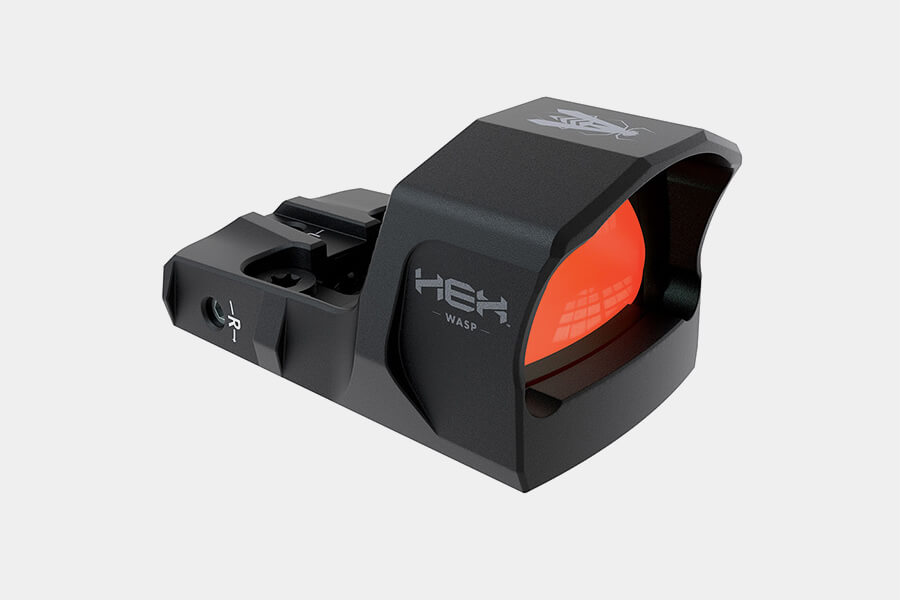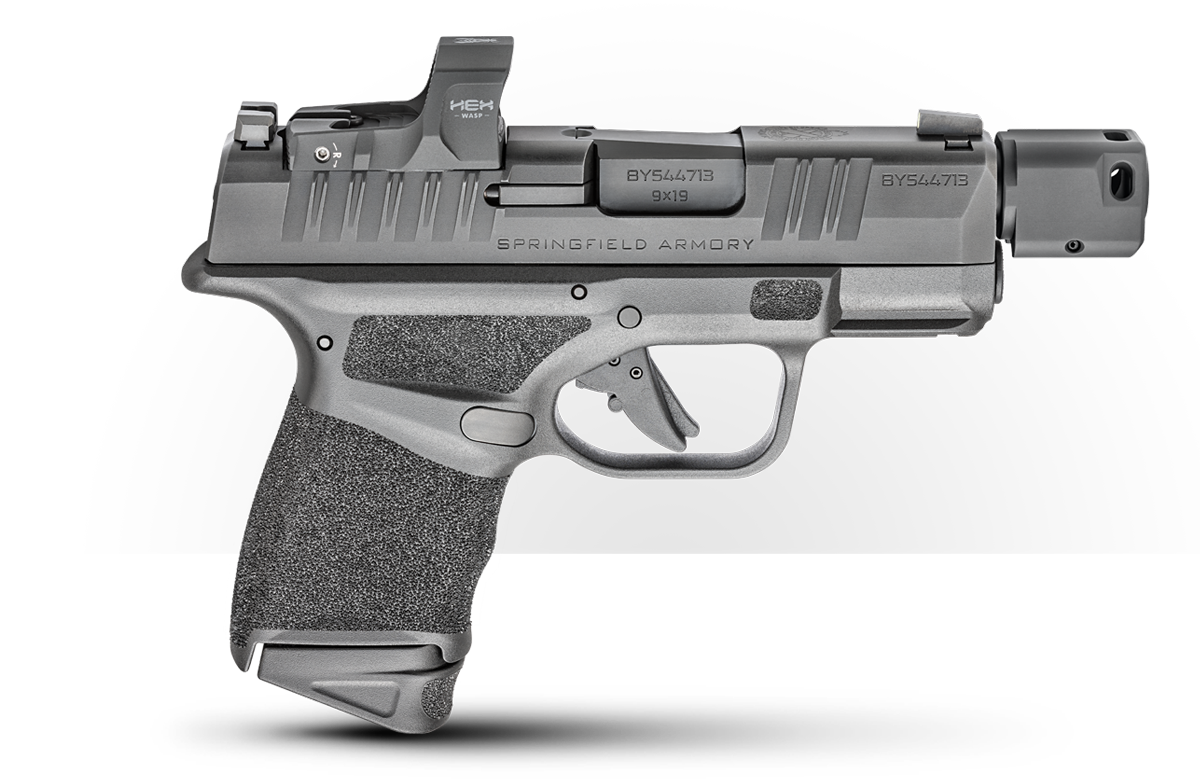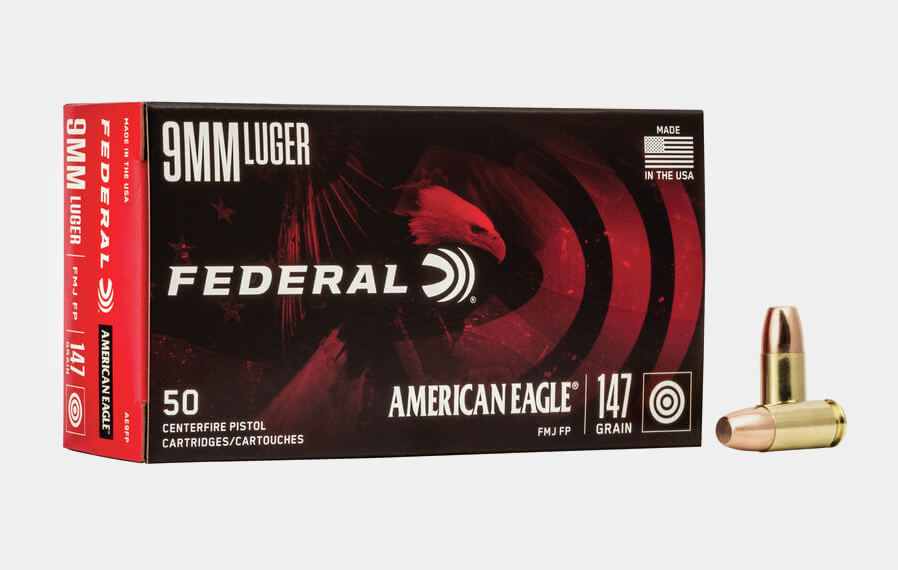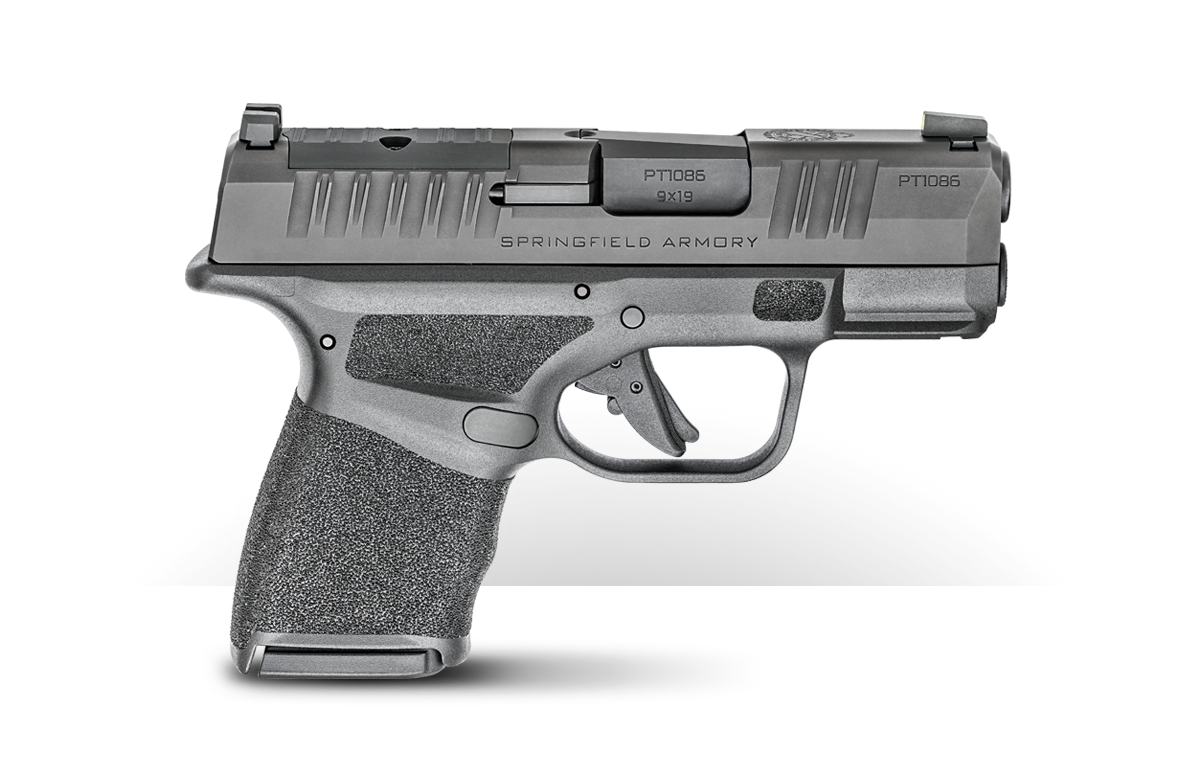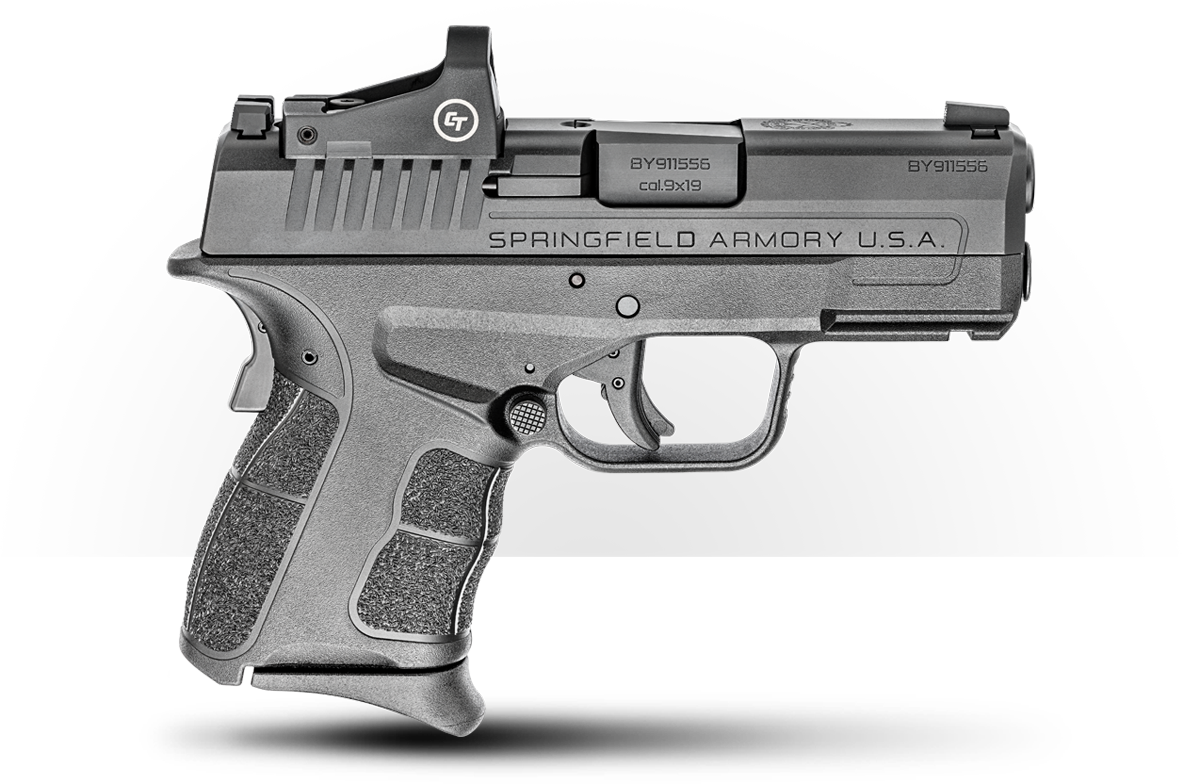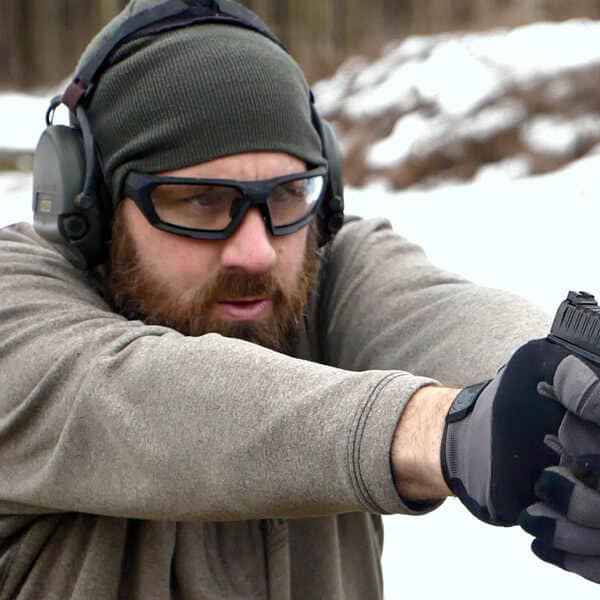When it comes to defensive firearms, reliability is a top priority. If your life is in the balance and a piece of gear is part of the equation, it simply has to work. You also need to have the confidence that it works so that you can set your worries about gear aside and simply solve the problem.
For that reason, any time I change something about my defensive handgun, I need to know that it is going to work. Every time. This idea extends to the gun itself, magazines, ammo, sights, holsters and just about any other modification of which you can think.
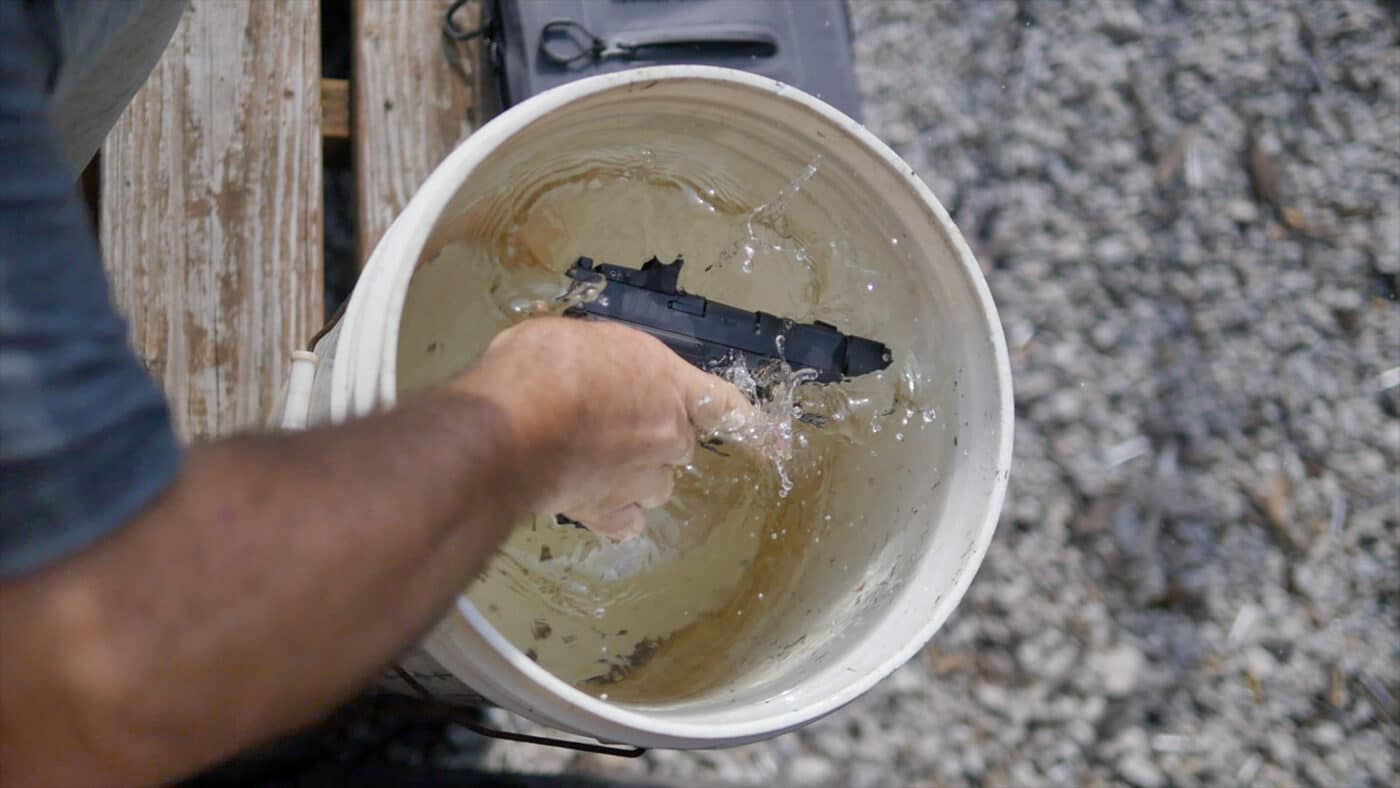
Over time, products tend to reveal their ability to hold up or not. This works great for most folks. It’s understandable, maybe even prudent, to take a wait-and-see approach and let early adopters do the work of sorting out the wheat from the chaff.
Well, that doesn’t work out so well for me. I am an early adopter. It’s actually my job to be part of the sorting. I like that part of my job. I also don’t want to find out later (when I really need it) if part of my self-defense rig is not going to work.
I have been running the new HEX Wasp red dot optic on a Hellcat RDP and have been very impressed with both the gun and the optic, but I wanted to see how much abuse the tiny electronic sight could handle. So, I decided to put it to the test.
Great Expectations
There is no doubt that on paper the HEX Wasp from Springfield Armory is a solid optic. So, I had to wonder if the diminutive dot could really deliver. I have some pretty high expectations for my gear, and that carried over to the Wasp.

The shell of the Wasp is a great place to start. It is machined from 6061 T6 aluminum and has a deep black hard coat anodizing. You can see the HEX namesake in the top half of the optic where three robust sides help to shield the optic’s glass lens. In addition, the top edge extends forward in a hood to help protect the glass.
The rear of the housing features unique serrations that help to reduce glare, and there is a sight channel cut in the base of the optic providing visual access to the irons. With the direct-mount nature of the Wasp on the Hellcat, it sits low enough for the HEX Wasp to co-witness with the pistol’s excellent U-Dot sights. The sides of the optic are cut with serrations that not only blend well with the Hellcat’s slide, but can serve as a surface to grasp the optic and help rack the slide.
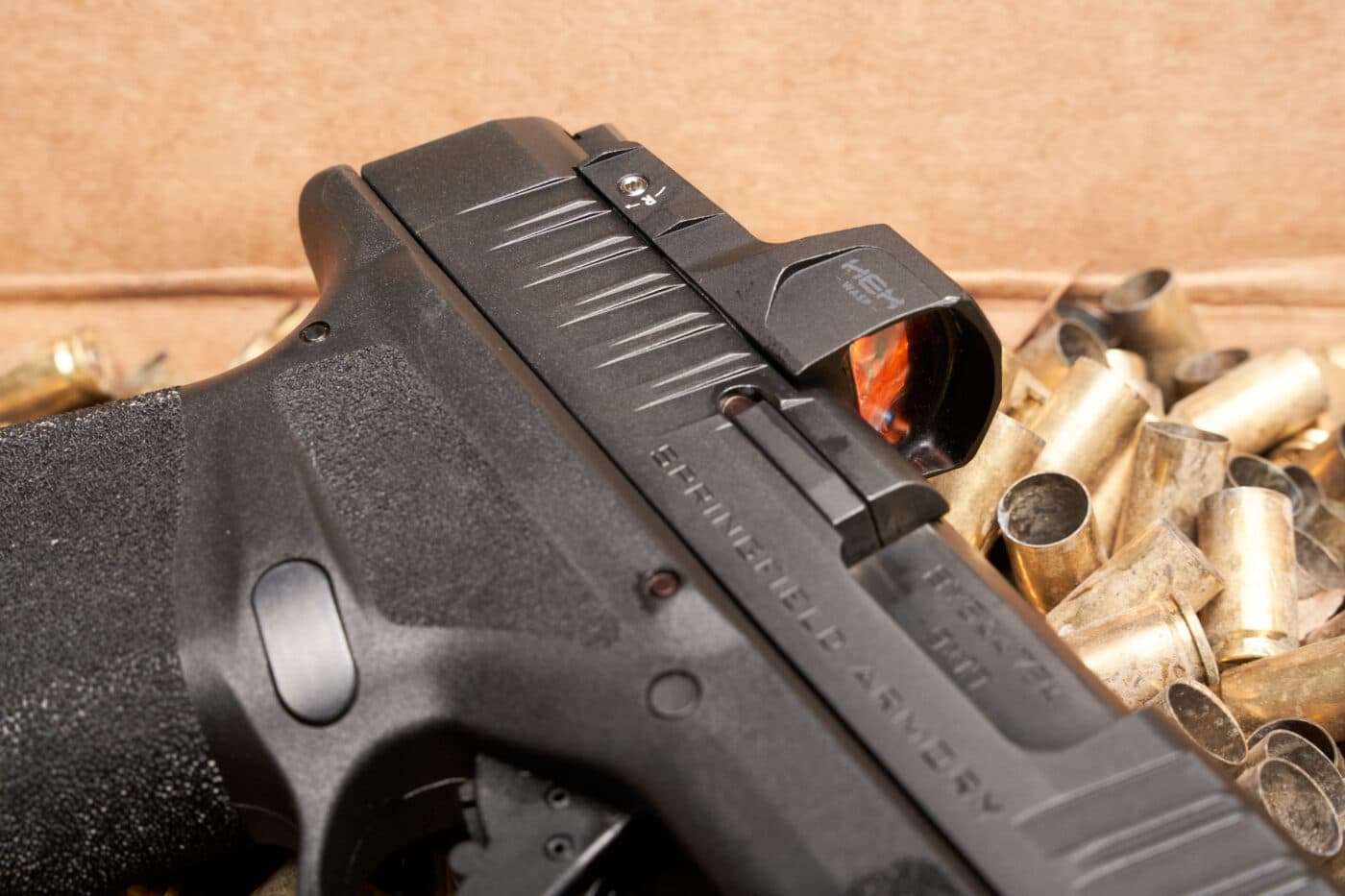
The optic features the Springfield Armory Micro footprint (the same as a Shield SMSc/RMSc), which means there is no need for an adapter plate when mounted on a Hellcat OSP or an XD-S Mod.2 OSP. This helps keep the optic low, allowing the above-mentioned co-witnessing with the iron sights.
At first, the Wasp appeared to have a rather small window to me. After all, it is a small dot designed for a micro 9mm pistol. However, I soon found out that it is very easy to pick up the dot in this little optic. Part of this is probably related to the notable clarity of the window itself. The lens of the Wasp is glass, not polymer, and has coatings to reduce glare and resist scratches. The rear serrations diffuse light and the sight channel provides a nice path for the eye to focus its attention on the 3.5 MOA dot. Also, the dot itself auto adjusts brightness based on ambient lighting quickly and reliably.
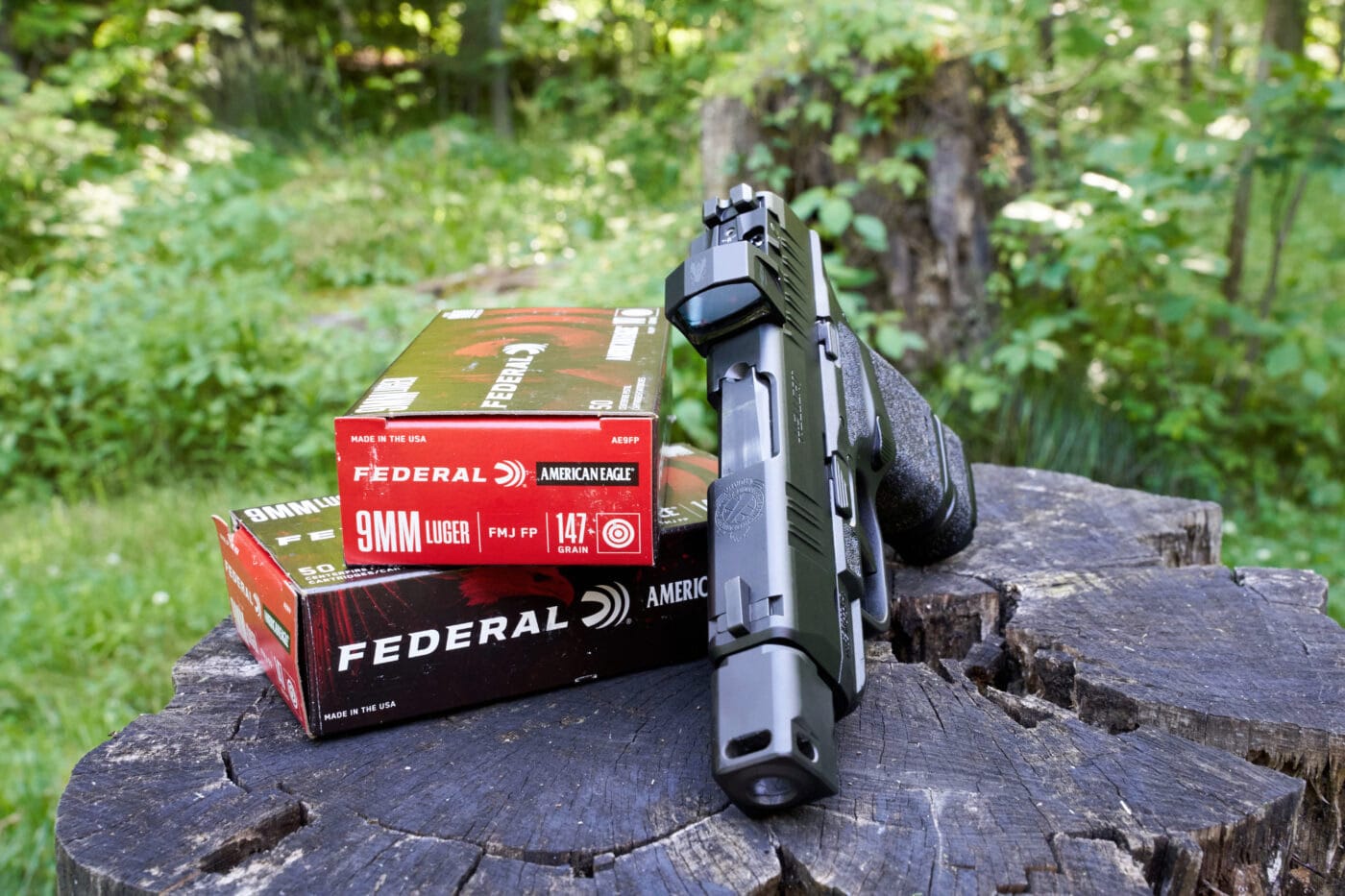
The HEX Wasp is also a waterproof optic, featuring an IPX7 rating. This means that it can withstand 30 minutes fully submerged in one meter of water. I don’t swim with my carry gun often, however, there are times when it seems like a rain cloud follows me around. Waterproof means worry-free.
The self-adjusting dot runs off a single, bottom-loading, CR2032 battery which has a two-year life. Put the battery in and the dot is on. Simple.
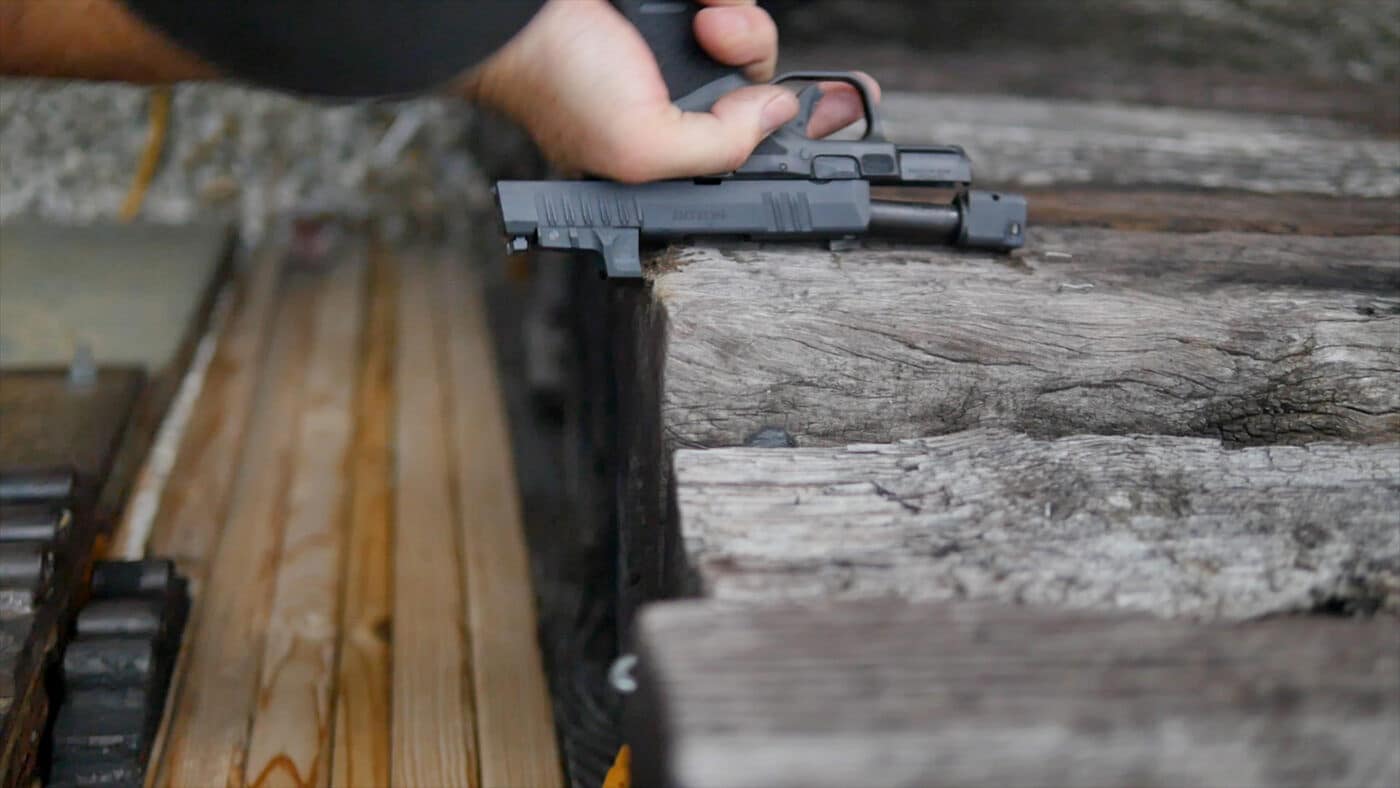
The Test
As I mentioned, the dot specs out wonderfully. That’s not what’s important though. What I wanted to know is, would it really perform.
So, I had the RDP topped off with the HEX Wasp and a little over 2,500 rounds of pre-pandemic Federal American Eagle 9mm 147-grain FMJ-FP ammo. The only thing left was a plan.
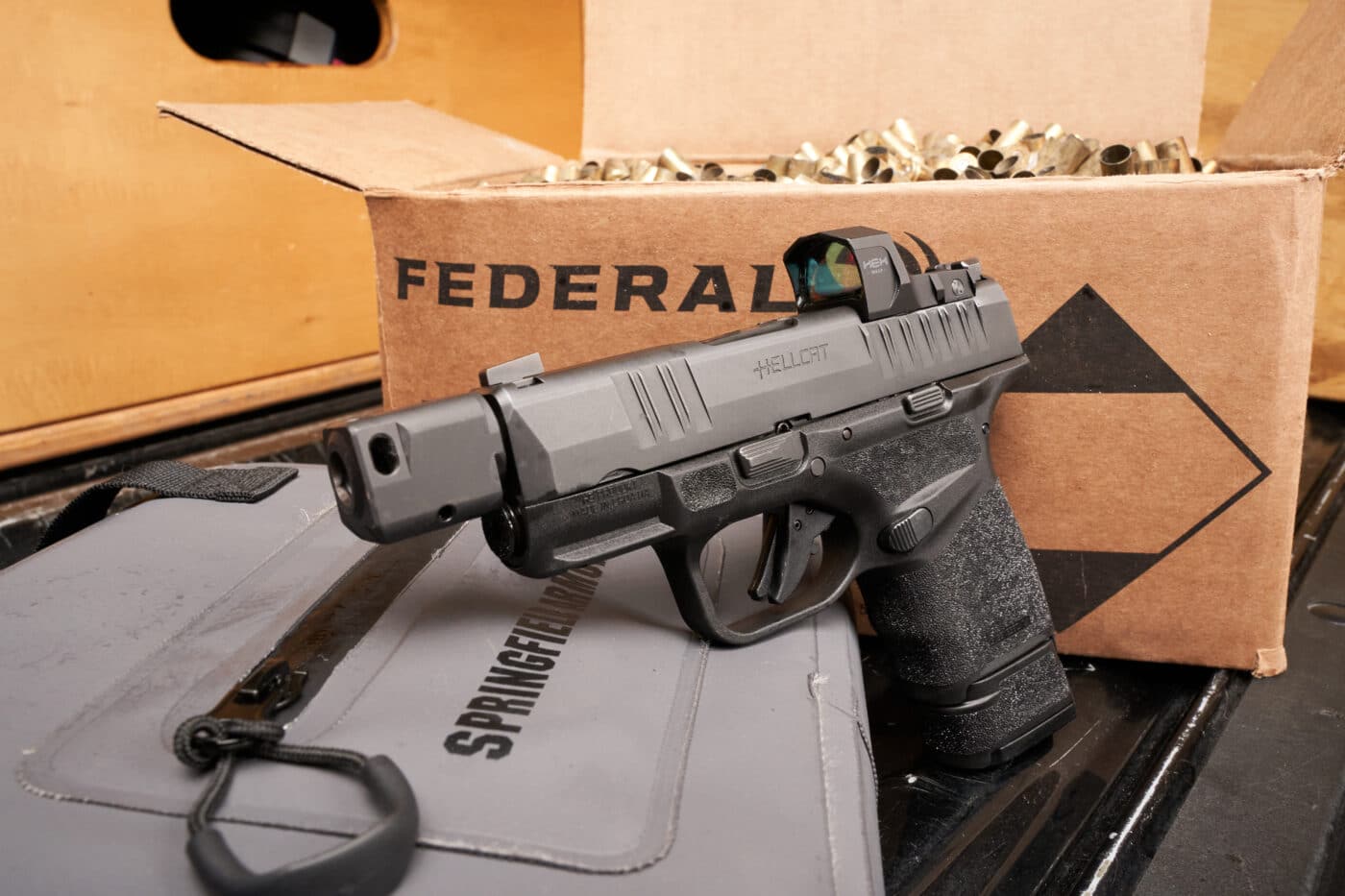
The most important thing in my mind was to find out if the dot could handle a steady diet of recoil. Sure, it could make it through a box of 50 rounds, but how about a few thousand? Next, did the waterproof rating mean what I thought it meant? And finally, was the housing robust enough to take abuse? I set off to find out.
Once I got the optic mounted and sighted in, I began the shooting portion of the test. I loaded up 11-, 13- and 15-round magazines and headed out to the range. I typically shot 500 to 750 rounds per session on a mix of paper and steel to be able to check zero and move things along quickly. I shot at a variety of distances and varied my shooting between a two-handed grip, primary hand only, and secondary hand only to evaluate the ease of picking up and tracking the dot.
I don’t have access to a one-meter deep water source, and honestly, I don’t really care about depth much beyond knee deep. It isn’t my SCUBA carry optic. I had access to an oversized bucket the same width as a five-gallon bucket, but taller. Perfect. I filled it up and placed the loaded RDP into the water. I let it soak for 30 minutes, then retrieved it and started shooting.
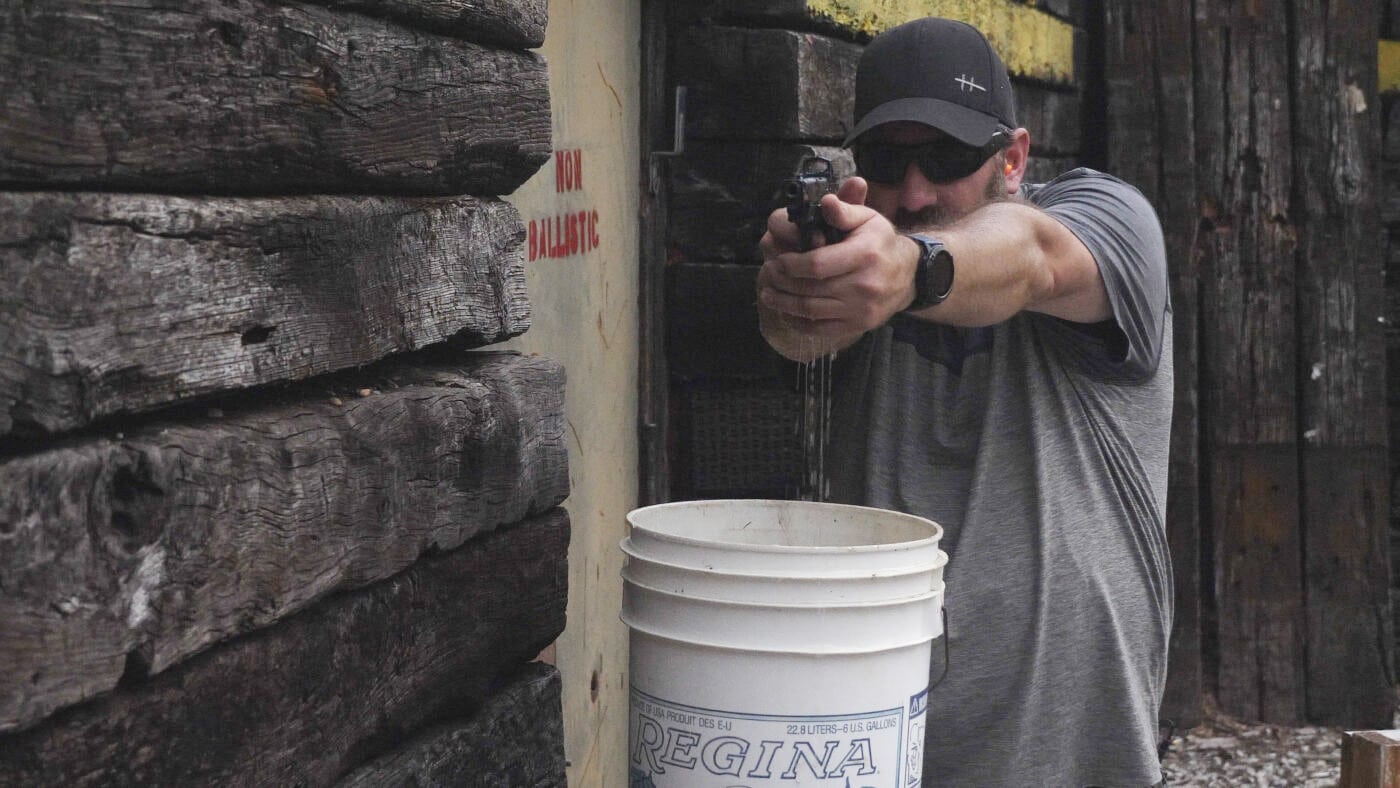
Next, I wanted to check the durability of the optic itself. It had proven it could withstand an impressive amount of recoil as well as a dunk in the drink, but how about some impact tests? I didn’t wonder if I could destroy the HEX Wasp; I could easily set up a test to defeat any pistol red dot. That wasn’t the point. What I really wanted to know was if the housing and the lens could withstand extended, realistic abuse. To me that meant racking the slide with the optic on an abusive surface. I figured a ballistic structure built from railroad ties ought to do the trick.
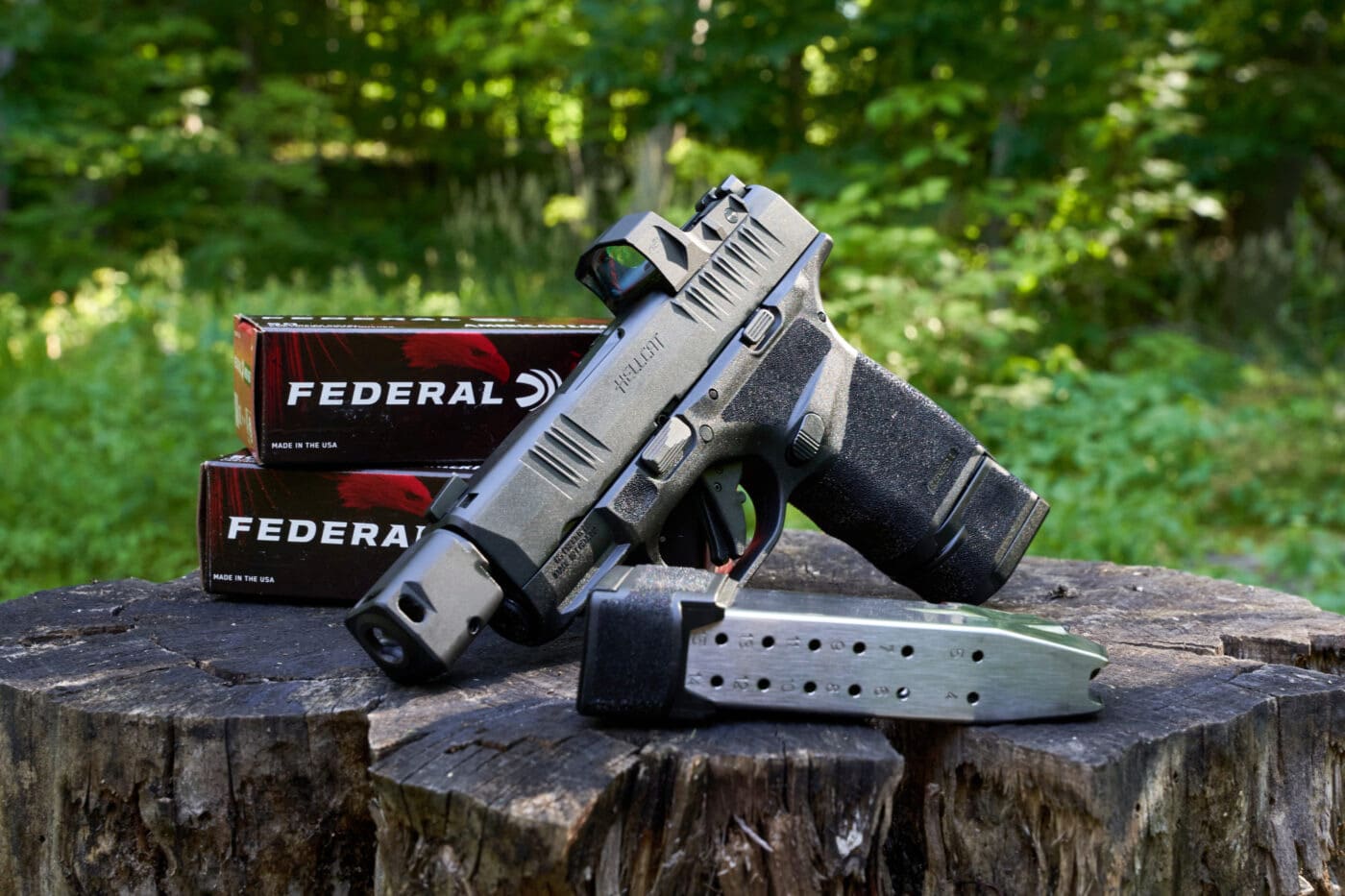
I racked the pistol 10 times on the shoothouse wall at Alliance, inserted a mag loaded with a single round, racked it again and then fired the pistol. This process was repeated 10 times for a total of 110 impacts and more rounds downrange.
The Results
The HEX Wasp performed admirably throughout the tests. The live-fire seemed like a simple task for the dot. One of the fail points of slide-mounted red dot sights is the recoil the sight has to live through. When the internal electronics of a dot fail due to recoil, in my experience it tends to happen in the first 1,000 rounds or so. The HEX Wasp kept right on trucking to a full 2,500 rounds with no issue.
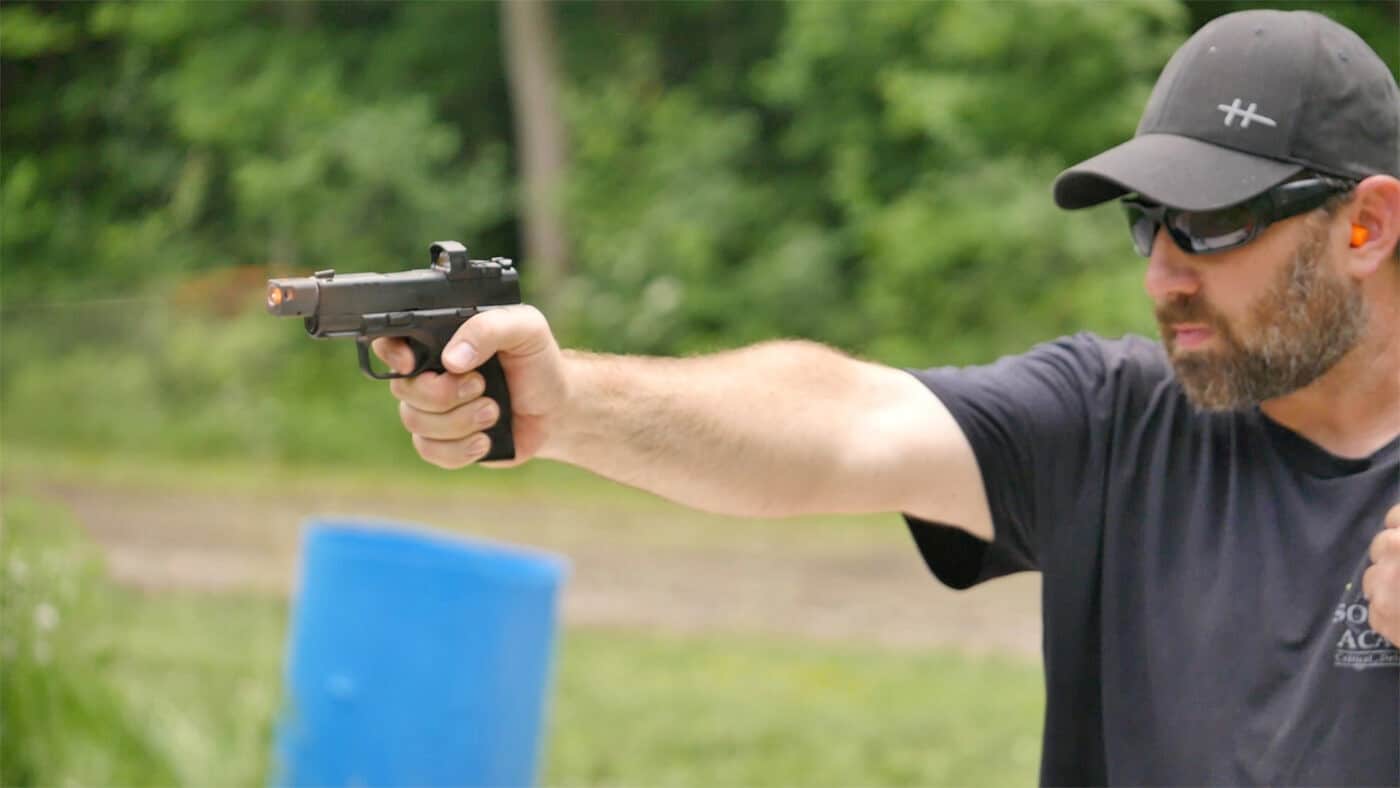
The mounting system worked well in the live-fire as well. I’ve seen more than one dot shear off a gun under recoil. I did pay close attention to mounting procedures and properly torquing the screws, which doesn’t hurt. Based on the live-fire test, I would expect it to go many thousands of rounds more without issue.
The water didn’t pose an issue for the Wasp either. The dot was fully functional right out of the water and remained functional days and weeks later. It is clear that no water entered the Wasp’s internals.
I was most worried about the Wasp’s performance when I started to hammer on it. Such a small optic seems like it could be pretty easily damaged. That was not the case. I smashed that optic into the ties with all the force I could muster, and I barely marred the finish. Obviously, the HEX Wasp is ready to take an impact and act as that emergency charging handle for your pistol when needed.
Final Thoughts
I understand that my test is on a sample of exactly one HEX Wasp. However, this one Wasp performed well. Very well, in fact. I’ve spent a good deal of time playing around with optics, and one of the things that has always been in the back of my mind is a dot failure.
Spending the time working over the HEX Wasp was very informative for me. It provided me with some solid evidence that the Wasp is ready to perform as a carry optic, and just as importantly it gave me the confidence to trust it in that role. I am glad I did it.
Editor’s Note: Please be sure to check out The Armory Life Forum, where you can comment about our daily articles, as well as just talk guns and gear. Click the “Go To Forum Thread” link below to jump in and discuss this article and much more!
Join the Discussion
Featured in this video
Continue Reading
Did you enjoy this video?

 136
136




